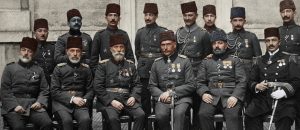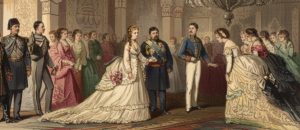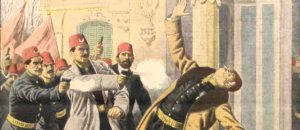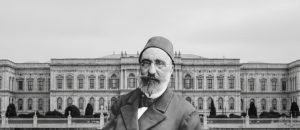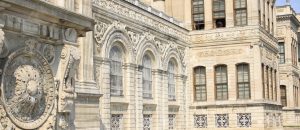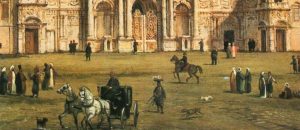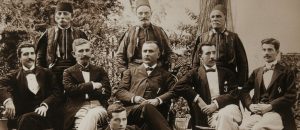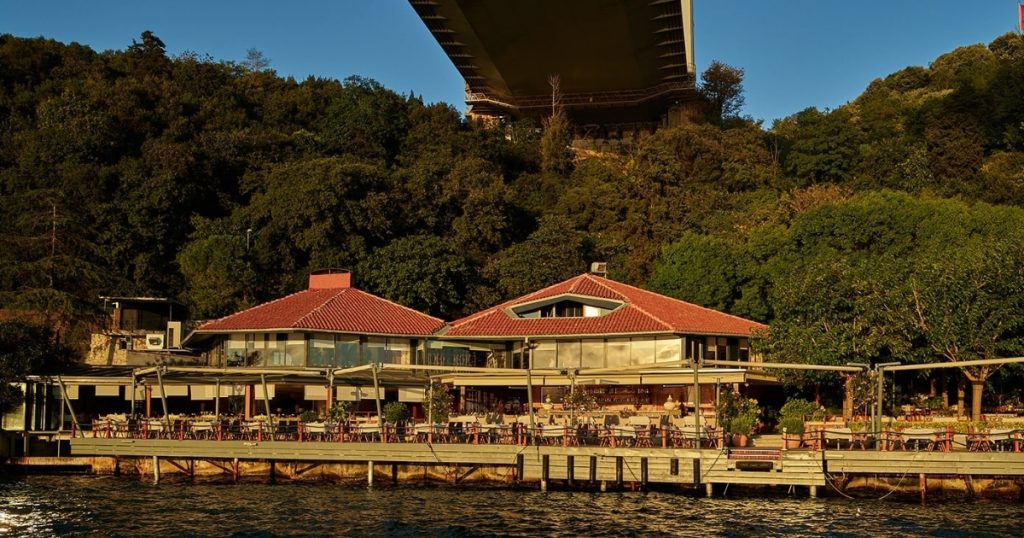The Army of Action (Hareket Ordusu), which marched on Istanbul after the declaration of the Constitutional Era (Meşrutiyet), and its commander, Mahmud Şevket Pasha, initiated a new and irreversible period in Ottoman politics. This was the era in which the Army became an actor that was no longer merely an instrument of the Sultan (Padişah), but one that possessed its own political will and, when necessary, enforced that will by force. This new generation of “Miralays” (Colonels), who emerged as the “Savior of the Constitutional Era” by suppressing the March 31st Incident (31 Mart Vakası), effectively transferred the Sultan’s authority to the Bâb-ı Âli (the government) and laid the foundations for the Army’s “guardianship” (vesayet) role over politics on the path to the Republic. This is the story of “The Sick Man” surrendering to his own army in order to survive.
The March 31st Incident: A Rebellion and an Opportunity
On April 13, 1909 (March 31, 1325, according to the Rumi calendar), an anti-Constitutionalist, pro-Sharia, and anti-Committee of Union and Progress (İttihat ve Terakki) military rebellion broke out in Istanbul. This rebellion, started by soldiers belonging to the Hunter Battalions (Avcı Taburları) and supported by some religious figures, quickly took the capital city under its influence. The rebels lynched CUP (İttihatçı) deputies and journalists, raided the Chamber of Deputies (Meclis-i Mebusan), and aimed to abolish the achievements of the Constitutional Era. Sultan Abdülhamid II’s failure or unwillingness to take effective steps to suppress the rebellion provided the Committee of Union and Progress (İttihat ve Terakki Cemiyeti) with the opportunity it was seeking.
The Army of Action in Istanbul: “The Saviors of the Constitutional Era”
Upon the news of the rebellion reaching Thessaloniki (Selanik), the Army of Action (Hareket Ordusu) was formed, consisting of units from the 3rd Army, where the Committee of Union and Progress was strongest, and volunteers. Mahmud Şevket Pasha, the Commander of the 3rd Army who was in Thessaloniki at the time, was appointed as the commander of the Army. Its Chief of Staff was a young officer named Mustafa Kemal (Atatürk). The Army of Action set off towards Istanbul by train with the slogan “to protect the Constitutional Era and the constitution”. The army entered Istanbul on April 24, 1909, suppressed the rebellion after brief clashes, and declared martial law in the capital.
This event was a turning point. For the first time in its history, an army arriving from the provinces (taşra) entered the capital, disregarding the central authority of the Sultan, and forcibly imposed its own political will. The Army was no longer merely a force executing the Sultan’s orders, but an autonomous political actor assuming the role of the “protector” of the regime and the constitution. Mahmud Şevket Pasha became the most significant symbol of this new power.
The Deposition of the Sultan: The Army’s Decision
Following the victory of the Army of Action, the Committee of Union and Progress decided to hold Sultan Abdülhamid II accountable, whom they believed to be behind the rebellion. The National Assembly (Milli Meclis—a joint meeting of the Chamber of Deputies/Meclis-i Mebusan and the Senate/Ayan Meclisi), convened under the shadow of the army, decided on the “hal” (deposition) of Sultan Abdülhamid II. Although this decision was legally taken by the Assembly, the real driving force behind it was the military will of the Army of Action and Mahmud Şevket Pasha. The Sultan had now become a figure who could be enthroned and dethroned by the army. In his place, Mehmed V Reşad, a more manageable figure, was brought.
The Rise and End of Mahmud Şevket Pasha
After the March 31st Incident, Mahmud Şevket Pasha became the most powerful man in the empire. He governed Istanbul as the martial law commander and served in the highest positions, such as Minister of War (Harbiye Nazırlığı) and Grand Vizier (Sadrazamlık). Through his person, the army established permanent guardianship (vesayet) over civil politics. This role of the army would also be decisive in the process leading up to the Raid on the Sublime Porte (Bâb-ı Âli Baskını). However, the army’s deep involvement in politics led to internal divisions and assassinations. Mahmud Şevket Pasha was killed in a political assassination on June 11, 1913, during his term as Grand Vizier. His death demonstrated how bloody and dangerous the path of the army’s entry into politics was.
Conclusion
In conclusion, Mahmud Şevket Pasha and the Army of Action under his command saved the Constitutional Era regime by suppressing the March 31st Incident. However, through these actions, they irreversibly weakened the authority of the Sultanate and initiated the tradition of the army directly intervening in politics. The Colonels of “The Sick Man” stepped onto the stage to save the empire, but by dismantling the Sultan’s authority, they effectively opened the door for a transition from a palace-centered empire to a state centered around the army and bureaucracy. This was one of the most significant and painful steps taken on the path to the Republic.







